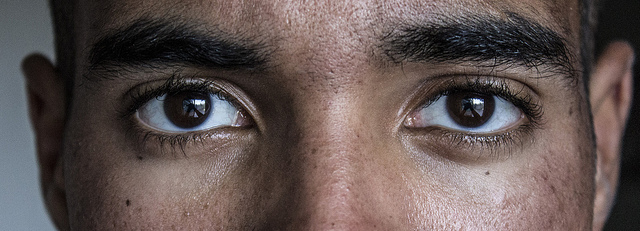Many would say that eyes are the windows to the soul, wouldn’t you agree? But whether we believe in that or not, it is true that the eyes are the first things we see when we interact with one another. They are one of the most crucial parts of our lives, allowing us to see and interact with the world around us. Yet, in addition to being an important part of our social interactions, they can also offer insight to our health.
As our eyes are generally white, yellow signifies a serious danger. One of the most likely causes of yellow eyes is jaundice. Jaundice is a disease that is caused by high levels of a compound called bilirubin in the blood system. Bilirubin is found in bile, a fluid produced by the liver to break down fats. Excessive bilirubin leads to leakage to other tissues in the skin and the eyes, causing a yellowish tint in the eyes. But what causes too much bilirubin buildup? The reasons differ slightly from newborns to children to adults.
Image Source: Karen Kasmauski
Newborns have immature livers, which cannot break down bilirubin as fast as it is made, leading to a larger likelihood of jaundice. Furthermore, newborns also need a large amount of milk to flush bilirubin out of their bodies; thus, a lack of breastfeeding can also cause jaundice. Yet other reasons include internal bleeding, blood incompatibility with the mother, or infections. Other symptoms of jaundice in infants include yellowing of the skin, loss of appetite, lack of energy, fever, or fussiness. Most cases are resolved on their own, while the rare severe ones require a blood transfusion.
In children and adults, causes of jaundice may include a liver injury, excessive breakdown of red blood cells leading to further production of bilirubin, or a problem in the bile duct system. When the tubes that carry the bile from the liver to the gallbladder are blocked, bilirubin cannot leave the liver and obstruction jaundice occurs. Other causes include cancer, malaria, or pancreatitis. Symptoms are similar to those in newborns, with some differences: tiredness and fever, a full stomach, dark urine, and pale stools.
Although yellow eyes in newborns are due to fairly easily resolved cases of jaundice, it is more likely to be serious in children and adults, requiring examination by a physician to determine treatment. It is always important to be vigilant about any kinds of symptoms, but it shouldn’t be too hard to spot in the case of yellow eyes, correct?
Feature Image Source: Eyes by Dboybaker










